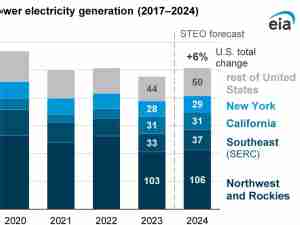Oil rose after Saudi Arabia raised prices for its crude globally in an attempt to shore up the price recovery.
Futures in New York rose as much as 11% Wednesday while Brent climbed as much as 7%. State-run Saudi Aramco, which earlier this year offered massive discounts on its crude, raised prices on almost all grades for June. The move comes as the kingdom and its OPEC+ partners embark on record production cuts in a bid to balance a glutted market.
“It’s a tide that’s lifting all boats,” said John Kilduff, partner at Again Capital. “It shows that the Saudis are finally getting serious about getting this market back under control and trying to remove some of the oversupply.”
U.S. prices gained further traction after data supplier Genscape Inc. reported that stockpiles in Cushing, Oklahoma, fell more than 350,000 barrels since Friday, according to market participants. It will be the first contraction since late February if the U.S. government reports a decline for the full week on Wednesday.
The OPEC+ coalition that includes Russia started implementing output cuts of 9.7 million barrels a day this month. The move follows a record build-up in inventories as demand was ravaged by the coronavirus outbreak that has seen oil tanks filling up globally.
While the Saudi pricing is bringing relief to the market, it may be lending too much optimism, and, in the end, robust demand increase is what’s needed to drive prices, according to Will Rhind, chief executive officer at GraniteShares Advisors Llc.
“It has to be demand driven at the end of the day,” Rhind said. “Whether it’s higher prices or a cut in supply, ultimately that has to be met by real demand.
There are signs that oil demand is recovering, and may even exceed supply by as early as the start of June, according to Goldman Sachs Head of Commodities Research Jeff Currie. Gasoline demand is also starting to pick up in the U.S. The premium for fuel over diesel is at its highest since 2017. Weekly gasoline supplied, an indicator of consumption, rose by 804,000 barrels a day, the biggest bump since June 2018, according the U.S. Energy Information Administration.
However, Rhind cautioned about a potential second wave of the virus that, if it returned people back to their homes and off the roads, could swiftly reverse demand.
“That’s a big question mark on the oil demand,” he said.









